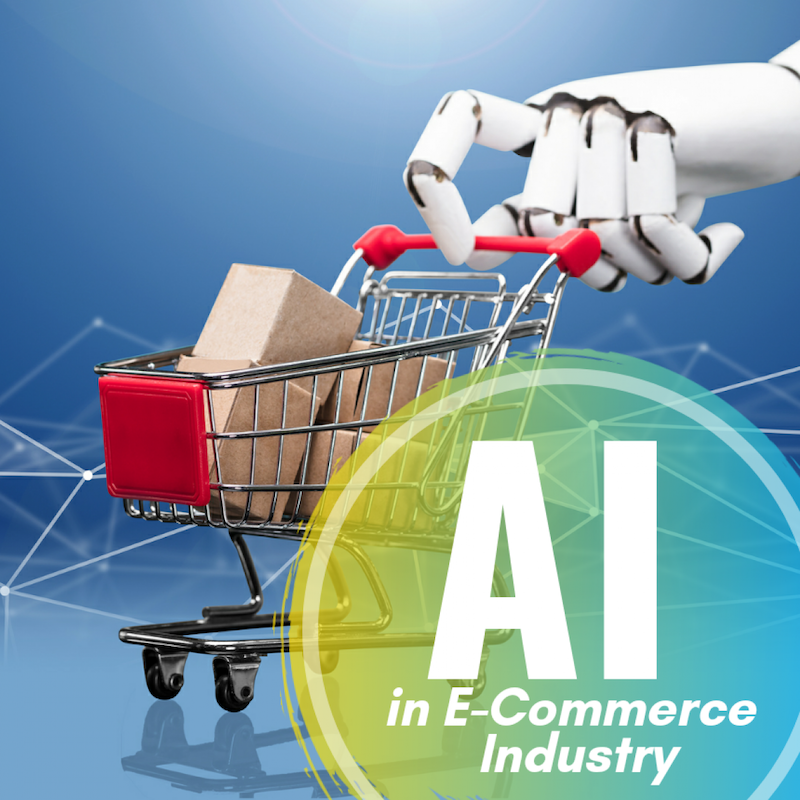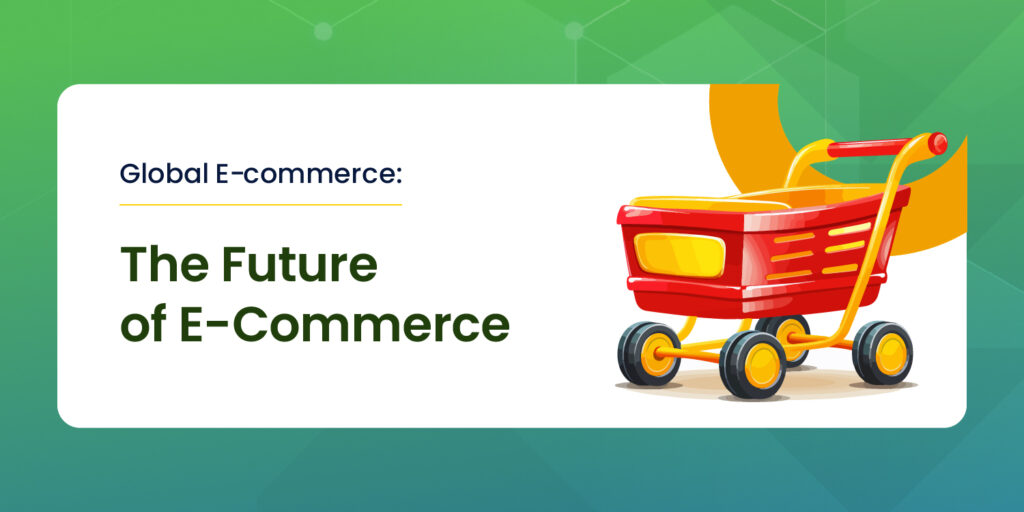The E-commerce business has been on a steep growth curve for the past two years, with several variables impacting its various sectors, as well as the industry as a whole. Artificial Intelligence (AI), in conjunction with machine learning, computer vision, and reinforcement learning, has become inextricably linked to the day-to-day operations of an E-commerce company. Thanks to ever-increasing technical developments, something fresh vies for the attention of online shops every day. According to a Statista survey, 70% of eCommerce decision-makers believe AI would improve their business, and more than 51% said it is something they are actively working on to help their company develop. In a short period of time, AI has had a major influence on the E-commerce business, with learning technologies and algorithms becoming the core of the websites and platforms that host the items offered online.
Algorithms study consumer behaviour and learn from it in order to uncover patterns that might be beneficial to the online retail business. AI helps firms establish lucrative business strategies by increasing conversions and optimising the buying experience on and off their E-commerce platforms. There are several ways in which AI is revolutionizing the industry, optimizing various processes, and maximising the efficiency in which they are executed.

1. Virtual assistants and Chatbots to enhance customer feedback
Using machine learning and language processing technologies, these assistants and chatbots, similar to Apple’s Siri and the Google talking assistant, understand user queries and provide support. They stay online 24/7, handling simple queries that users may have with no trouble. The existence of these chatbots increases customer satisfaction as it creates a sense of quick and easy access to information to the consumers making use of them. For e-commerce organisations, automating customer service will save time, energy, and money.
2. Personalization and targeted marketing
The purchase experience of each customer is distinct, depending on their own demands, interests, likes, and preferences. Algorithms that analyse the consumer’s purchase history, browsing behaviour, and click-throughs provide dynamic content showing specific products, services, brands, or campaigns. Large volumes of data can now be crunched quickly by computers, allowing for real-time analytics and optimization, as well as spotting trends in client behaviour by analysing data on the fly. It increases the average order value while engaging consumers, encouraging repeat purchases, and raising conversion rates.
This algorithm is comparable to that of social media advertising. Every year, a rising number of individuals are using social media. The advertisements on these platforms are hyper-personalized based on their browsing history, purchasing tendencies, and other criteria, presenting them with advertisements for things they are likely to be interested in.
3. Optimizing Search
Before visiting an e-commerce website or platform, many shoppers know precisely what they want and use the search bar to find it. For the phrases they searched for, they get appropriate search results. Reinforcement learning technology is used by eCommerce sites’ ranking algorithms to improve search results. Traditional search methodologies are enhanced through AI by combining complex components such as navigation, faceted search, suggested product listings, autocomplete, relevant queries, recent searches, and more.
Furthermore, by implementing voice and image search capabilities into their eCommerce sites, online retailers make it easier, faster, and more comfortable for customers.
4. Automation
Online stores must be accessible 24 hours a day, seven days a week, across numerous platforms. Automated algorithms perform repetitive tasks, easing front-end and back-end workflows. They automate everything from introducing new goods across many channels to coordinating sales, offering loyal consumers discounts, identifying high-risk transactions, and more.
5. Reaching out and retargeting consumers
Retargeting refers to reaching the users who’ve already engaged with your platform, at any stage of the buying process. The integration of AI into this proves to be extremely useful and cost-effective since it reduces the cost per impression. AI uses personalised push notifications with the help of the behavioural data you’ve collected and offers one-on-one communication. This ensures your brand is placed at the forefront of the consumers’ minds.
6. Dynamic pricing
Dynamic pricing uses big data and machine learning algorithms to alter product prices in real-time based on many criteria. Inventory, as well as supply and demand estimates, are among them. This, in turn, can aid in forecasting future pricing.
7. Warehousing and inventory
Forecasting solutions can help online retailers better keep track of their supplies, ensuring that they don’t run out of or overstock particular items. They leverage sales trends and consumer behaviours, projected increases or decreases in demand, or possible supply chain issues that could affect inventory levels. The automation of various processes in the warehouse also maximises efficiency by reducing redundancies.
AI has transformed the e-commerce industry and will continue to do so, since the need for quicker and more efficient methods is continually increasing. It analyses large bulks of data in no time, increasing consumer retention, optimizing the sales process, and forecasting ever-changing trends.
To grow as a brand in the e-commerce industry, it is essential to incorporate AI into the everyday operations of the brand.

What We Do
Company
Resources
Careline:+1 (917) 5957762
© 2025 Assiduus Global INC. All Rights Reserved.



